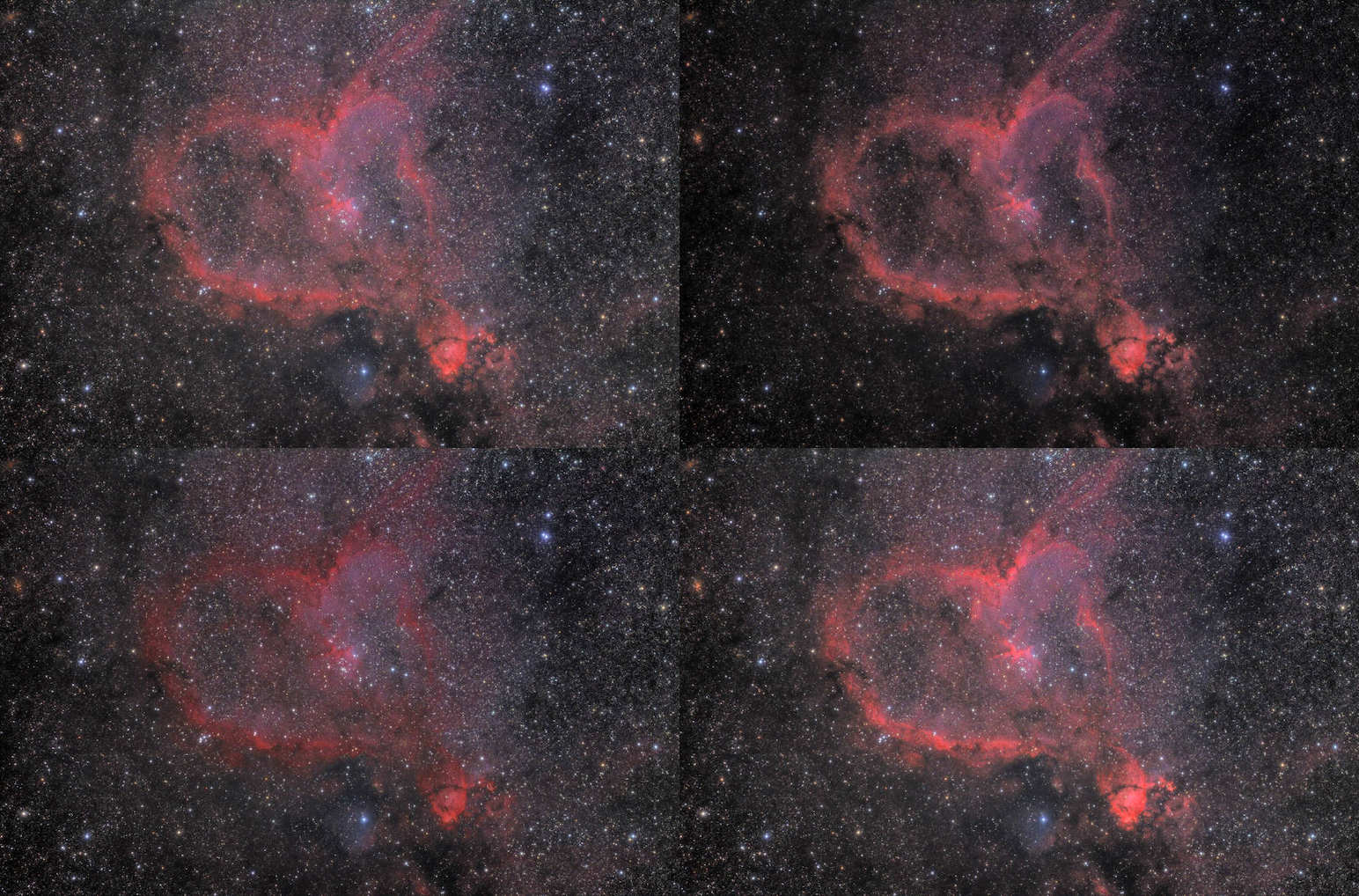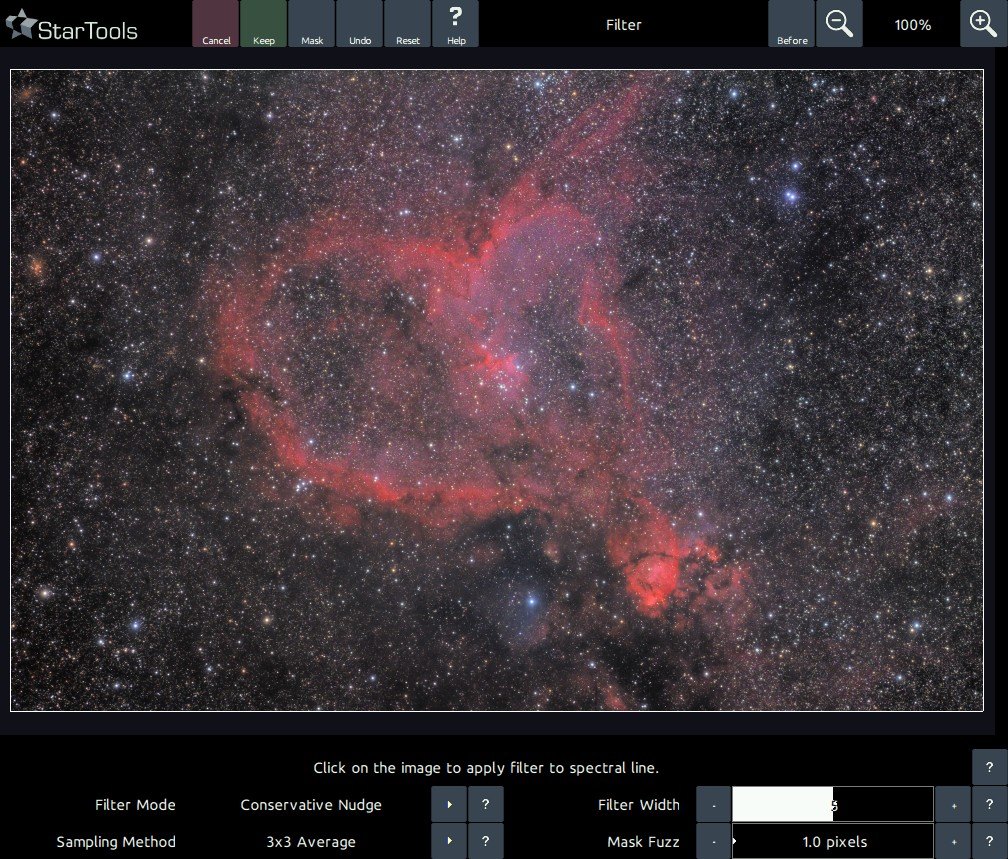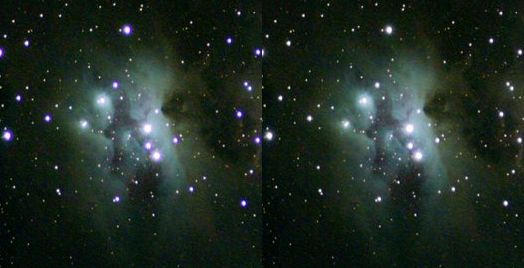- Features & Documentation
- Filter
Filter: Feature Manipulation by Colour

The Filter module allows for the modification of features in the image by their colour by simply clicking on them. It is as close to a post-capture colour filter wheel as you can get.
Filter can be used to bring out detail of a specific colour (such as faint Ha, Hb, OIII or S2 details), remove artefacts (such as halos, chromatic aberration) or isolate specific features. It functions as an interactive colour filter.
The Filter module is the result of the observation that many interesting features and objects in outer space have distinct colours, owing to their chemical make up and associated emission lines. Thanks to the Color Constancy feature in the Color module, colours still tend to correlate well to the original emission lines and features, despite any wideband RGB filtering and compositing. The Filter module was written to capitalise on this observation and allow for intuitive detail enhancement by simply clicking different parts of the image with a specific colour.
Usage

A 'Filter Mode' parameter selects the mode of the filter. Available modes are;
- 'Conservative Nudge'; this mode boosts the selected signal linearly, but only if the boost would not yield any overexposure
- 'Nudge (Screen)'; this mode boosts the selected signal by using a Screen overlay operation, boosting the signal non-linearly.
- 'Pass'; only lets through the selected signal and attenuates all other signal.
- 'Reject'; blocks the selected signal, leaving all other signal intact.
- 'Fringe Killer'; Draws colour from neighbouring pixels that are not masked and gives these colors to masked pixels. Note that this mode requires a mask to be set.
- 'Saturate Visual H-alpha'; saturates red coloring. In this mode, the user must click on the coloring that is to be preserved while the H-alpha is boosted.
- 'Saturate Visual H-beta/O-III'; saturates cyan coloring. In this mode, the user must click on the coloring that is to be preserved while the H-beta/O-III is boosted.
The 'Filter Width' parameter specify the responsiveness of neighbouring colors in the spectrum. A small 'Filter Width' will see the module only modify areas with a very precise match in colour to the area selected, while a larger 'Filter Width' will see the module progressively modify areas that deviate in colour from the selected area as well.
The 'Sampling Method' mode selects how a click on the image samples the image. The '3x3 Average' mode samples a 3x3 area around the clicked pixel and uses the resulting 9-pixel average as the input colour. The 'Single Pixel' mode, samples only the precise pixel that was clicked.
Finally, a 'Mask Fuzz' parameter allows for the result to progressively masked in cases where a mask is set.
Mitigating chromatic aberration

The Filter module's 'Fringe Killer' mode is an easy and very effective way to remove unsightly blue and purple halos caused by chromatic aberration.
Simply put the offending stars, including their halos in a mask (one can be automatically generated from within the Filter module, by clicking Mask, Auto, Stars or FatStars, Do, Keep). Next click a few times on different parts of the purple or blue halos and they will slowly disappear with each click.
You may also be interested in...
- Edge located dark anomalies (under Preparing data for the Wipe module)
Stacking artefacts are the most common dark anomalies located at the edges of your image.
- Operating the Wipe module (under Usage)
The Wipe module is able to detect horizontal or vertical banding and correct for this.
- AutoDev (under Features & Documentation)
StarTools' AutoDev module uses image analysis to find the optimum custom curve for the characteristics of the data.
- Evaluating the result (under Usage)
The magnitude of the noise grain is subsequently recovered, modeled and shaped for use as quantization error diffusion in the final denoised image.
